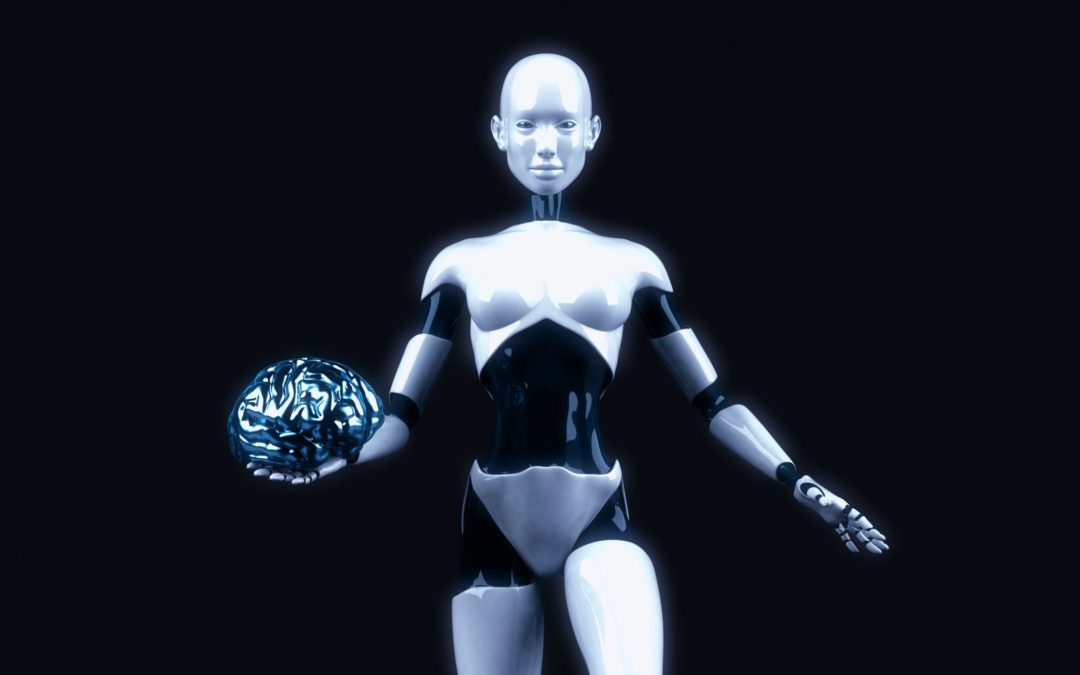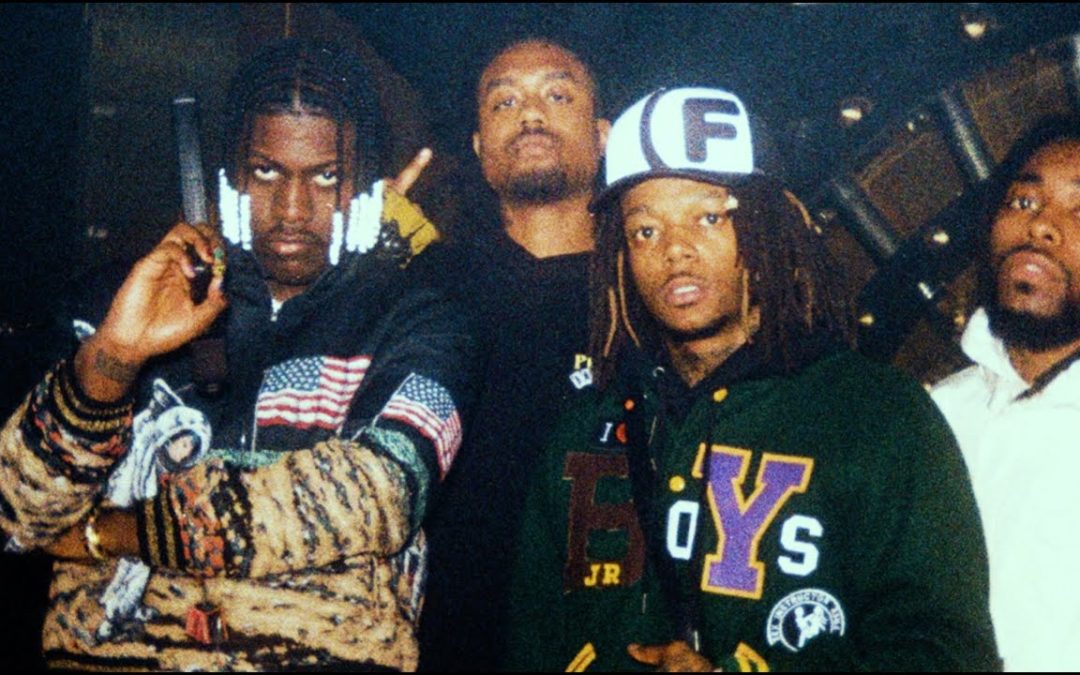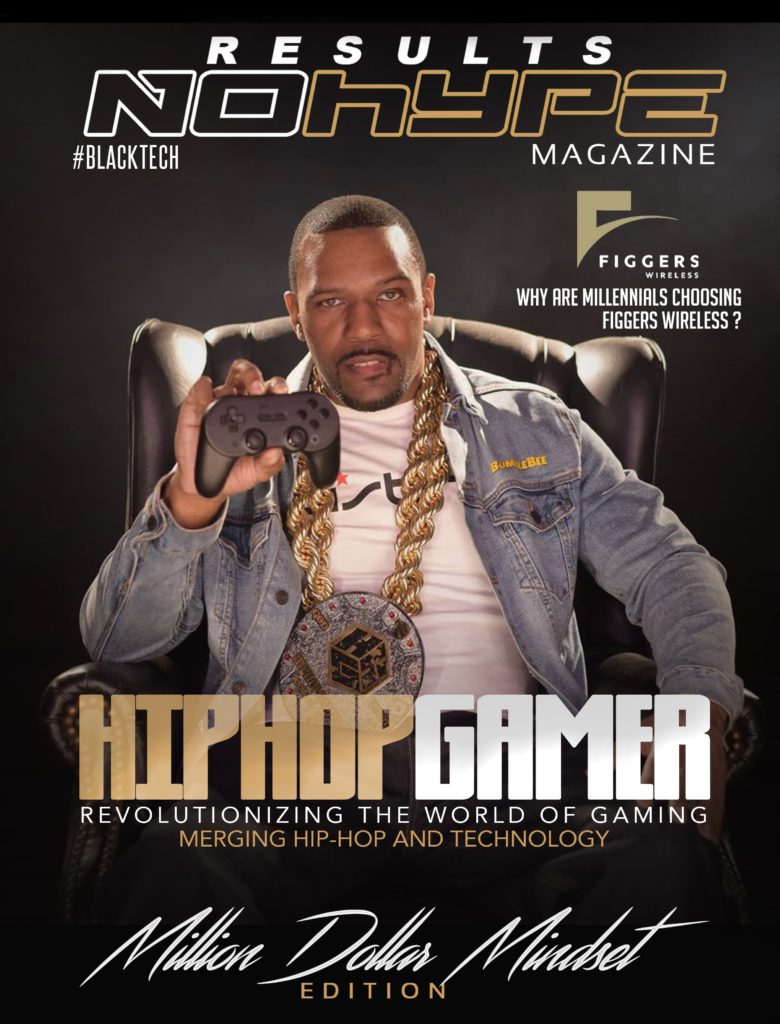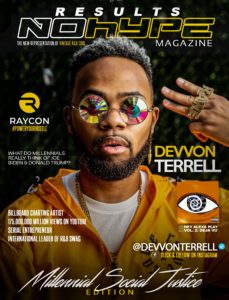
by Laghe Andrews | Sep 12, 2023 | Business News, Latest, Tech News |
Image Credit: Photo by julien Tromeur on Unsplash
Artificial Intelligence (AI) has been instrumental in transforming various sectors of industry and society. However, with great power comes great responsibility, and AI is no exception. There’s a peculiar phenomenon associated with AI, particularly Large Language Models (LLMs) like OpenAI’s ChatGPT, that has been causing quite a stir in the tech and business spheres. This phenomenon is often referred to as ‘hallucination’.
The Hallucination Phenomenon
Despite the enormous capabilities of AI, it has a peculiar tendency to generate information that doesn’t exist, or in simple words, to ‘hallucinate’. These hallucinations range from benignly odd to seriously problematic. For instance, ChatGPT once erroneously asserted that the Golden Gate Bridge was transported across Egypt in 2016. This is a simple mistake, and while it may be humorous, it’s indicative of an issue at the core of these models.
In a more serious instance, an Australian mayor threatened legal action against OpenAI when ChatGPT falsely claimed he had pleaded guilty in a high-profile bribery scandal. This misinformation not only has the potential to tarnish reputations but also raises legal and ethical concerns.
Researchers have also discovered that these AI-induced hallucinations can be exploited maliciously. Hackers can manipulate LLMs to disseminate harmful code packages to unknowing software developers. Furthermore, these models have been found to provide incorrect medical and mental health advice, such as falsely suggesting that wine consumption can prevent cancer.
Understanding the Training Process of Models
To comprehend why hallucinations occur, we must delve into how AI models are developed and trained. Generative AI models, including LLMs, essentially function as complex statistical systems that predict data, be it words, images, music, or speech. They lack genuine intelligence, learning from countless examples typically sourced from the public web.
For instance, if an AI model is presented with the phrase “Looking forward…” from an email, the AI might complete it with “… to hearing back” based on the pattern it has learned from countless similar emails. However, it’s important to remember that the AI doesn’t truly understand the sentiment of ‘looking forward’ to something.
Sebastian Berns, a PhD researcher at Queen Mary University of London, explains that the current LLM training framework involves ‘masking’ previous words for context and then predicting which words should replace the concealed ones. This concept is similar to predictive text in iOS, where we continually press one of the suggested next words.
While this probability-based approach generally works well, it’s not flawless. Due to the vast range of words and their probabilities, LLMs can generate grammatically correct but nonsensical text. They can spread inaccuracies present in their training data or mix different information sources, even those that contradict each other.
The Inherent Challenges with AI Models
The issue with hallucination in AI models is not borne from malicious intent. These models don’t possess the capability for malice, and concepts of truth and falsehood are meaningless to them. They’ve learned to associate certain words or phrases with certain concepts, even if those associations aren’t accurate.
“Hallucinations are tied to an LLM’s inability to estimate the uncertainty of its own prediction,” Berns explains. “An LLM is typically trained to always produce an output, even when the input significantly deviates from the training data. A standard LLM doesn’t have a method to determine if it’s capable of reliably answering a query or making a prediction.”
The Quest to Tackle Hallucinations
The challenge that lies ahead is whether hallucinations in AI models can be ‘solved’, and the answer to this is dependent on our understanding of ‘solved’.
Vu Ha, an applied researcher and engineer at the Allen Institute for Artificial Intelligence, maintains that LLMs “do and will always hallucinate”. However, he also believes that there are tangible ways to reduce hallucinations, depending on how an LLM is trained and deployed.
For instance, a question-answering system can be engineered to have high accuracy by curating a high-quality knowledge base of questions and answers, and connecting this knowledge base with an LLM to provide accurate answers via a retrieval-like process.
Ha uses the example of running the question “Who are the authors of the Toolformer paper?” (Toolformer is an AI model trained by Meta) through Microsoft’s LLM-powered Bing Chat and Google’s Bard. Bing Chat correctly listed all eight Meta co-authors, while Bard incorrectly attributed the paper to researchers at Google and Hugging Face.
“Any deployed LLM-based system will hallucinate. The real question is if the benefits outweigh the negative outcome caused by hallucination,” Ha said. In other words, if there’s no obvious harm done by a model that occasionally gets a date or name wrong but is generally useful, it might be worth the trade-off.
Berns highlights another technique that has been used to reduce hallucinations in LLMs: reinforcement learning from human feedback (RLHF). Introduced by OpenAI in 2017, RLHF involves training an LLM, gathering additional information to train a “reward” model, and fine-tuning the LLM with the reward model via reinforcement learning.
Despite the effectiveness of RLHF, it has its limitations. “I believe the space of possibilities is too large to fully ‘align’ LLMs with RLHF,” warns Berns.
Exploring Alternate Philosophies
If hallucination in AI models can’t be fully solved with current technologies, is it necessarily a bad thing? Berns doesn’t think so. In fact, he suggests that hallucinating models could act as a “co-creative partner”, providing outputs that may not be entirely factual but contain useful threads to explore.
“Hallucinations are a problem if generated statements are factually incorrect or violate any general human, social or specific cultural values,” Berns explains. “But in creative or artistic tasks, the ability to come up with unexpected outputs can be valuable.”
Ha argues that we are holding LLMs to an unreasonable standard. After all, humans also “hallucinate” when we misremember or misrepresent the truth. However, with LLMs, we experience cognitive dissonance because the models produce outputs that look good on the surface but contain errors upon further inspection.

by Diontae Bussey | Sep 12, 2023 | Business News, Latest, Tech News |
The opioid crisis has been a perplexing issue, baffling scientists for nearly two decades as they have strived to comprehend the ever-changing societal and systemic reasons that induce people to misuse opioids and to pinpoint prospective overdose danger zones.
These painstaking and frequently imperfect endeavors unfold as healthcare providers endeavor to deliver secure, efficient therapy, and other resources to those grappling with addiction.
As both scientists and healthcare providers scrutinize the expansive and enduring influence of the opioid crisis, they are now inquisitively investigating AI (Artificial Intelligence) and pondering, Could AI be the key to ending the opioid crisis?
Tech Adoption in Healthcare: A Slow Process
Healthcare is not a sector known for swiftly adopting new trends; it’s notoriously slow in testing and incorporating novel technology. This hesitance has its repercussions. One study implies that the industry forfeits over $8.3 billion annually because of its reluctance or failure to adopt technology such as sophisticated electronic health records.
Public health scientists and biomedical engineers have been discreetly fostering an AI-driven revolution in medicine, with addiction prevention and treatment being the latest beneficiaries.
However, the costs of the opioid crisis extend beyond financial losses. Since 1999, over 1 million people have perished due to drug-related overdoses. In 2021, 106,699 drug overdose deaths were recorded in America, marking one of the highest per capita volumes in the nation’s history. Approximately 75% of all these overdoses were linked to opioid use, which includes prescribed analgesics such as Vicodin and Percocet, along with illicit drugs like heroin.
Despite the Centers for Disease Control and Prevention and the National Institutes of Health investing billions of dollars into outreach, education, and prescription monitoring programs, the crisis has stubbornly persisted.
The Opioid Crisis: The Human Cost
For the past decade, I have been conducting research on the opioid crisis in rural and urban communities across America, including New York City and rural southern Illinois.
Most of my peers concur, albeit reluctantly, that there’s a considerable amount of speculation involved in pinpointing the complex risks faced by drug users. Which drugs will they acquire? Will they inject, snort, or smoke them? Who, if anyone, will they use around, in case they overdose and require assistance?
But that’s not all. Practitioners also regularly grapple with inconsistent federal and state guidelines on effective treatments for opioid use disorder, like suboxone. They also find themselves playing catch-up with increasingly unpredictable drug supplies contaminated with affordable, synthetic opioids like fentanyl, which is largely responsible for recent surges in opioid-related overdose deaths.
While AI advancements like ChatGPT have captured most of the public’s imagination, public health researchers and biomedical engineers have been quietly brewing an AI-infused revolution in medicine, with addiction prevention and treatment being the newest recipients.
AI Innovations in Opioid Crisis Management
Innovations in this space primarily utilize machine learning to identify individuals who may be at risk of developing opioid use disorder, disengaging from treatment, and relapse. For instance, researchers from the Georgia Institute of Technology recently developed machine-learning techniques to effectively identify individuals on Reddit who were at risk of fentanyl misuse, while other researchers developed a tool for locating misinformation about treatments for opioid use disorder, both of which could allow peers and advocates to intervene with education.
Other AI-powered programs, such as Sobergrid, are developing the capacity to detect when individuals are at risk of relapsing — for example, based on their proximity to bars — then connecting them to a recovery counselor.
The most impactful advancements relate to the reduction of overdoses, often triggered by drug mixing. At Purdue University, researchers have developed and piloted a wearable device that can detect signs of overdose and automatically inject an individual with naloxone, an overdose-reversing agent. Another significant development has been the creation of tools to detect hazardous contaminants in drug supplies, which could drastically reduce fentanyl-driven overdoses.
The Potential Pitfalls of AI in Opioid Crisis Management
Despite the immense potential, there are concerns — could facial recognition technology be used to locate people who appear intoxicated, leading to discrimination and abuse? Uber has already taken a step in developing this kind of capacity in 2008, attempting to patent a technology that would detect a drunk passenger.
And what about dis/misinformation, a problem already plaguing chatbots? Might malicious parties embed incorrect information into chatbots to mislead drug users about risks?
The Fine Balance
Since Fritz Lang’s seminal silent film “Metropolis” in 1927, the public has been fascinated by the idea of new, humanlike technology making lives easier and richer. From Stanley Kubrick’s “2001: A Space Odyssey” in 1968 to films like “I, Robot” and “Minority Report” in the early 2000s, though, these hopeful visions have slowly morphed into a kind of existential dread.
It will be up to not just researchers and clinicians, but also patients and the broader public to keep AI honest and prevent humanity’s biggest challenges, like the opioid crisis, from becoming insurmountable ones.

by Jesse Swindell | Sep 11, 2023 | Latest, Music News, New Music Alert |
Emerging from the vibrant landscapes of South Memphis, Key Glock has established himself as a force to be reckoned with in the world of hip-hop. On September 5, Glock introduced his fans to a new visual masterpiece for his track, “Penny.” The music video, a product of the combined efforts of producers Mannie iL and Swaeze, showcases Glock’s unflinching focus on wealth and the lifestyle it brings.
“Penny:” A Symphony of Swagger and Success
In “Penny,” Glock flaunts his financial prowess through his lyrics. He raps about his high-end lifestyle, including a shoutout to his dentist for the “20 pointers” in his mouth and his recent extravagant purchase that equates the cost of a Bentley. Glock’s lyrics echo his insatiable hunger for success, as he expresses his intention to turn down a 10 million dollar deal, aiming for a billion instead.
Through his lyrics, Glock underlines his unique style, turning heads with his Prada overalls that give him a “hillbilly” appearance. The song stands as a testament to Glock’s ability to juxtapose the commonplace and the extraordinary, getting the listeners hooked to his unique narrative.
The Visual Feast: Living the High Life
The music video for “Penny” complements the overall theme of the song. In the clip, Glock can be seen enjoying the high life, surrounded by his crew on a private jet. The video captures Glock’s carefree and extravagant lifestyle, with scenes of him being in the company of gorgeous women at an indoor basketball court.
Key Glock on Private Jet
The visual narrative of the music video aligns perfectly with Glock’s lyrics, creating a comprehensive portrayal of the rapper’s life and aspirations.
“Penny” is a part of Glock’s album, “Glockoma 2 (Deluxe),” which was released in February. The album, an extension of the original “Glockoma 2,” features eight additional tracks with zero features, staying true to Glock’s independent approach to his music.
The album boasts beats from some of the industry’s most renowned producers, including BandPlay, Tay Keith, Bankroll Got It, Hitkidd, Sledgren, Teddy Walton, DY Krazy, and more. These contributions have significantly enhanced the sonic landscape of the album, making it a well-received LP.
In an interview with “Big Facts,” Glock highlighted his determination to maintain his individuality in a competitive industry. He emphasized the importance of being oneself, irrespective of the environment or the people around.
“I try my best to not be like the next person. Whatever you do, no matter what room you in, no matter who in the room, just be yourself. Don’t try to adapt to the n**gas. Be you,” Glock commented.
This philosophy is evident in Glock’s work. His music videos, including “Penny,” showcase his unique style and approach to music, making him a stand-out artist in the world of hip-hop.
Final Thoughts
Key Glock’s latest music video for “Penny” is a testament to his unique aesthetic and his unwavering focus on success. The video, coupled with Glock’s infectious energy and catchy lyrics, offers viewers a sneak peek into the extravagant lifestyle he leads. It’s a reminder of Glock’s individuality in the music industry and his relentless pursuit of excellence.
To get a taste of Glock’s unique style and swagger, watch the music video for “Penny” below.

by Laghe Andrews | Sep 11, 2023 | Latest, Music News, New Music Alert |
JID and Lil Yachty have been creating waves in the music industry since 2020. Their fans have eagerly anticipated new releases, teased through performances, live streams, and social media posts. In a recent announcement, the duo finally confirmed the speculation — two previously leaked songs, “Van Gogh” and “Half Doin Dope”, would be available for streaming. And true to their promise, the two tracks were finally released, much to the delight of their widespread fan base.
The Arrival of the Blakkboyz
Their collaboration took a new turn as they released these tracks under the group name, Blakkboyz. This exciting development was a treat for fans who had been waiting for official releases from their favorite artists.
An Artistic Visual for “Van Gogh”
A visual for “Van Gogh” was also released alongside the tracks. Directed by Boosh, the video is a simple yet expressive portrayal of the duo’s life and style. The video showcases the artists at an unknown residence, brandishing guns and exploring an art gallery, reflecting the eccentricities of their lifestyle.
JID’s Journey so far
JID, known for his critically acclaimed third studio LP, The Forever Story, is currently working on a follow-up titled Forever & A Day. The Forever Story, which was released in 2022, had major contributions from EARTHGANG, Kenny Mason, 21 Savage, Baby Tate, Lil Durk, Ari Lennox, Yasiin Bey, and more.
Lil Yachty’s Recent Work
Meanwhile, Lil Yachty has been experimenting with his music. He unveiled his psychedelic body of work, Let’s Start Here, in January. The album features assistance from Diana Gordon, Teezo Touchdown, Justine Skye, Foushee, Ant Clemons, and Daniel Caesar. Since then, he has released several well-received tracks, including “Strike (Holster),” “SOLO STEPPIN CRETE BOY,” and “TESLA”.
Conclusion
The music industry is always evolving, and artists like JID and Lil Yachty continue to push boundaries and redefine standards. Their collaboration has created a stir among fans and critics alike, and it will be interesting to see what they come up with next.

by Jonathan P-Wright | Sep 8, 2023 | Latest, Music News, New Music Alert |
On a somewhat ordinary Wednesday night, a rare celestial event took place, one that we won’t witness again until 2037. As the world looked upwards, a super blue moon illuminated the night sky, offering a breathtaking spectacle. In sync with this astral phenomenon, the fearless and talented Coi Leray launched her new EP, appropriately named “Blue Moon“. This EP was not just a musical offering, but a celebration of the rare lunar event, a soundtrack to the cosmic vibes that resonated globally.
“Blue Moon”: A Soundtrack to the Skies
Creating a perfect harmony between celestial occurrences and musical rhythm, “Blue Moon” served as a fitting tribute to the rare super blue moon event. Offering a collection of five tracks, the EP was a treat for Leray’s fans, establishing a unique connection between the music and the moonlit night.
Coi Leray: The Jersey-based Luminary
Hailing from New Jersey, Coi Leray’s musical prowess has been a beacon of talent in the industry. Her audacity and unapologetic approach to her music have garnered her a dedicated fan base. With “Blue Moon”, she once again proved why she is an artist to watch.
“Isabel Morant”: A Visual Treat
Coi Leray didn’t just stop at the EP. She also released a stunning visual for the standout track “Isabel Morant”. The creative minds behind the video, Mathking64 and Rocketboy, captured Leray’s essence perfectly. The video showcases Leray’s unabashed expression of wealth, success, and the joy of outdoing her rivals.
“Yeah I’m on they a**, hop up on that couch and roll up Latto out the bag, I don’t need a stylist, they can’t f**k with Coi Leray, tried to count me out, and now I’m big as Trippie Redd, woo, I hope I don’t crash, scrapin’ up the rim up on that sidewalk, ride it fast, I can’t wait to pour up and cook up, up in that lab, this that brand new ring, Denim Tears, LV tags…”
The music video, directed by Michael Vincent, presents Leray in various settings, from a bathtub to deep waters, and even amidst a mob of her supporters. Each frame is a testament to her bold personality.
“COI”: The Sophomore Journey
Earlier in June, Leray released her second LP, “COI”. The 16-song album featured collaborations with renowned artists like David Guetta, Saucy Santana, Giggs, Lola Brooke, Skillibeng, and even the late James Brown. With tracks like “Players”, “Bops”, “My Body”, and “Run It Up”, the album was a resounding success.
Leray’s Recent Collaborations
Leray has also been involved in notable collaborations recently, contributing to tracks like Dave East’s “Sex So Good”, Roy Woods’ “Hate Me”, Metro Boomin’s “Self Love”, RAYE’s “Flip A Switch. (Remix)”, and OhGeesy’s “Better Together”.
Wrapping Up: A Celebration of Music and the Moon
The “Blue Moon” EP and the “Isabel Morant” video release are prime examples of Coi Leray’s bold approach to music. She is not just creating songs, but experiences, linking her art to the world around her. As we wait for the next super blue moon, we can enjoy the lunar vibes from Leray’s “Blue Moon”. Press play and let the music transport you to the night sky, under the light of the super blue moon.








RECENT COMMENTS